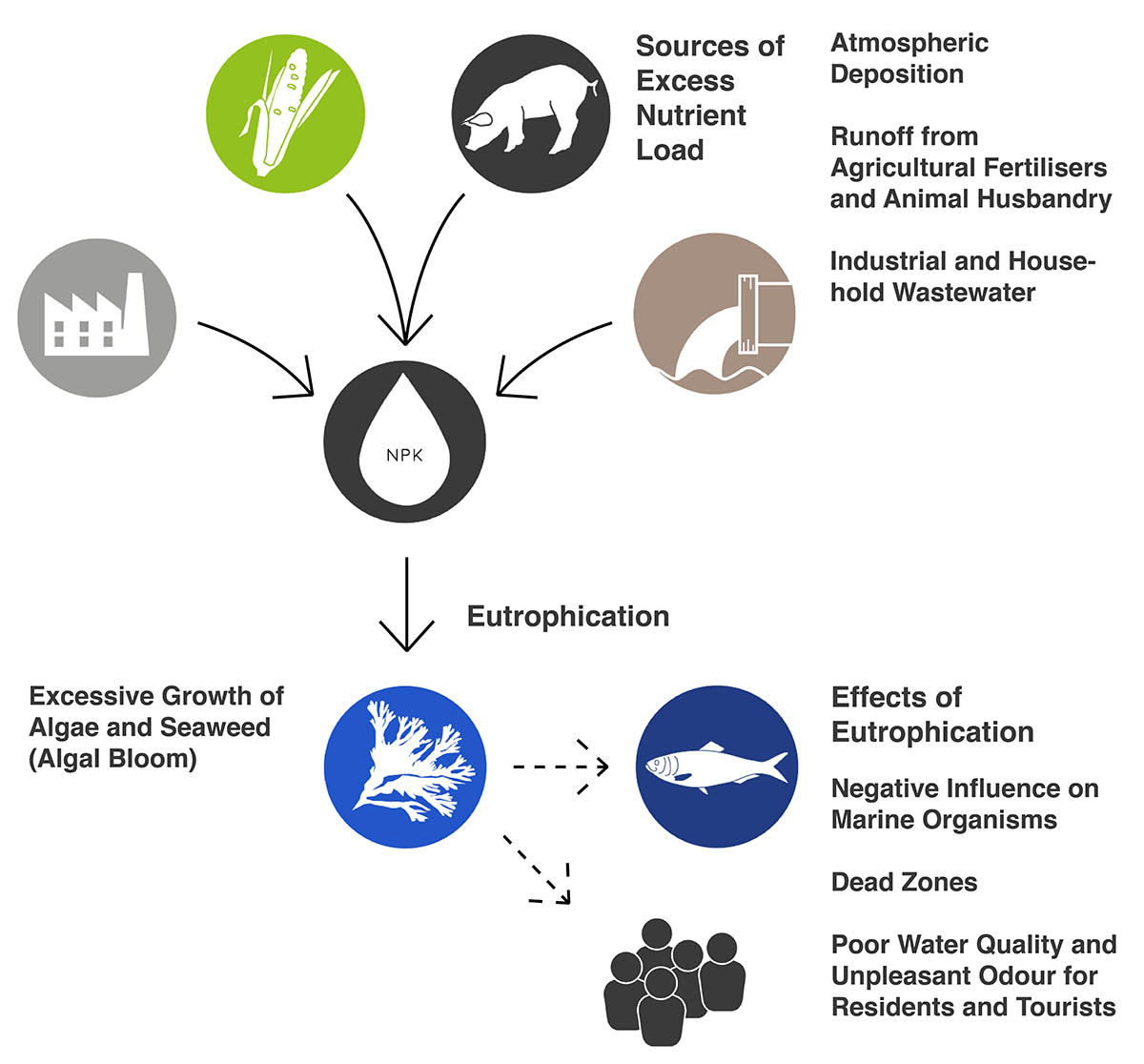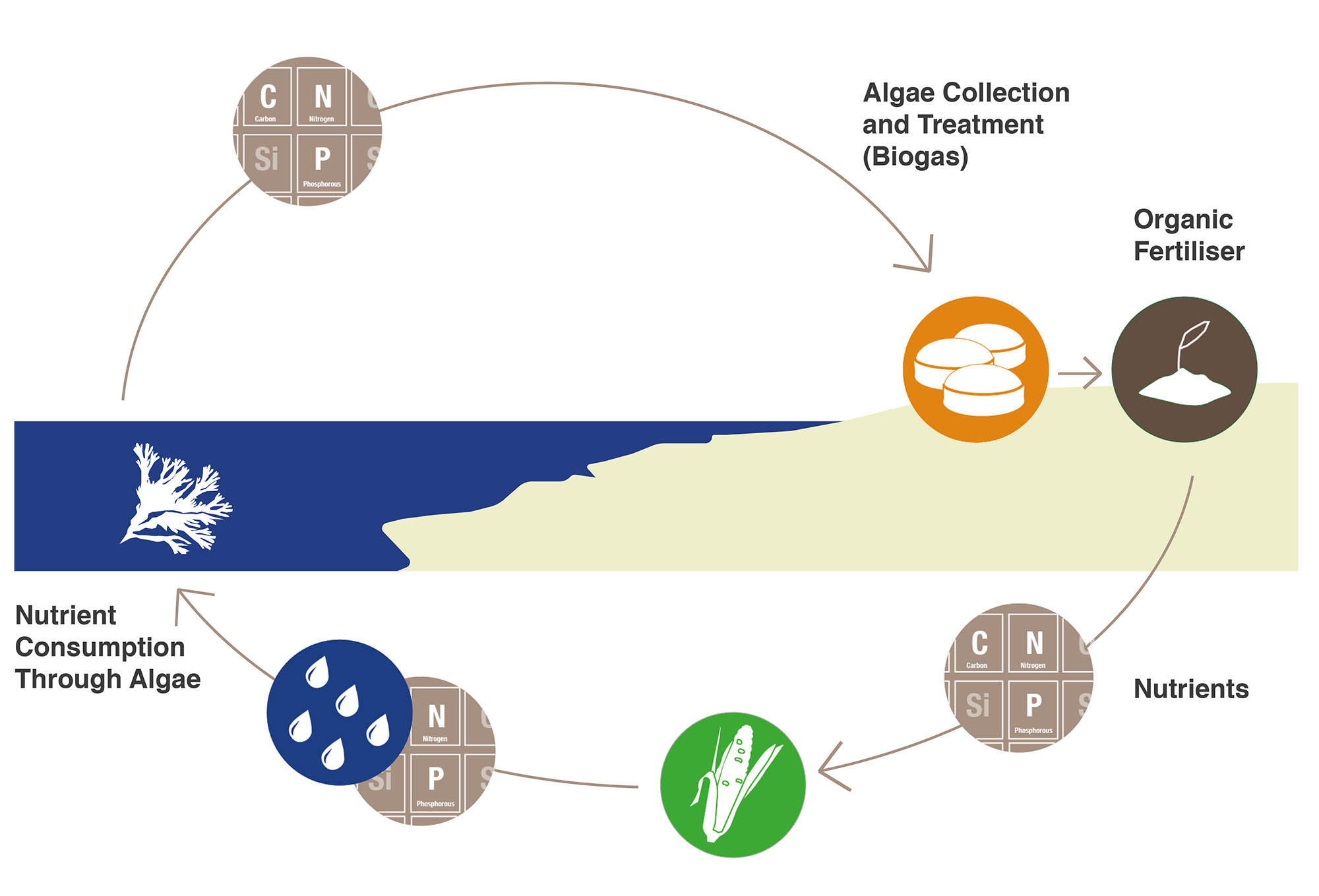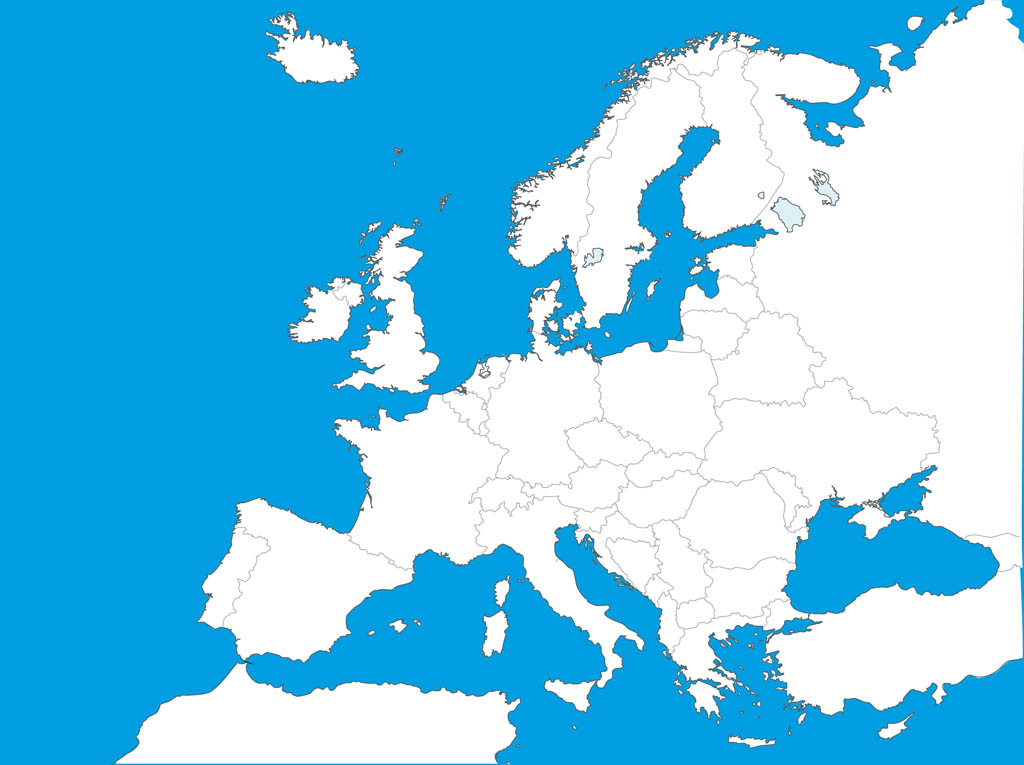Environment
Eutrophication
The Baltic Sea is the biggest brackish water body worldwide – having a mixture of salt water and fresh water. Its unique biodiversity is, however, threatened by a phenomenon called eutrophication. Eutrophication is essentially due to an overabundance of the nutrients nitrogen and phosphorous in the water. The sources are manifold – they can come from the atmosphere, runoff waters from agricultural fields as well as wastewater, just to name a few. The Baltic Marine Environment Protection Commission – Helsinki Commission, known as HELCOM, has created a website that gives detailed information on the causes and effects of eutrophication. The HELCOM report “State of the Baltic Sea” (English) gives a good overview.
One of the effects of eutrophication is an excessive growth of plants, such as phytoplankton, which in turn causes other ecosystem changes. The accelerated growth of algae and other water plants yields problematic ecological consequences. When the algae decompose they consume corresponding amounts of oxygen, which creates dead zones at the bottom of the Baltic Sea.
An increase of dead zones at the sea bottom makes animal life there impossible. Thus, biodiversity decreases and the situation worsens. Furthermore, foam formation occurs and the degradation of washed up algae on the beaches causes unpleasant odours. This creates problems for the environment and communities along the coast – including the livelihoods associated with tourism.

> CO2 savings by avoiding excess algae on the sea floor
The excess algae that is washed back into the water sinks to the sea floor. There is decays and ferments. The fermentation process emits methane.
> Avoidance of dead zones on the sea floor
Algae fermenting is an "anaerobic" process meaning that it takes place in in the absence of oxygen. However, small amounts of oxygen in the vicinity are quickly consumed. It is then not available for other species and a "dead zone" is created.

> CO2 savings from algae collection
When the algae decays on the beach it emits uncontrolled greenhouse gases. The amount saved depends on how fresh it is collected.
> Soil health by avoiding algae leachate
The leachate from decaying algae can leach into the sand and soil. Without adequate oxygen it begins to ferment. This process emits methane (GHG) and removes the oxygen.
How much is your region affected by eutrophication?
HELCOM - the Helsinki Commission - was established in 1974 to monitor the state of the Baltic Sea. On their website they offer free map and data tools so that you can see how affected your region is.
Current annual total input of nutrients to the Baltic Sea:
826,000
tonnes of Nitrogen per year
30,900
tonnes of Phosphorous per year
~2/3
from anthropogenic sourcesData from HELCOM's Holas II "Eutrophication Supplementary Report" 2018

